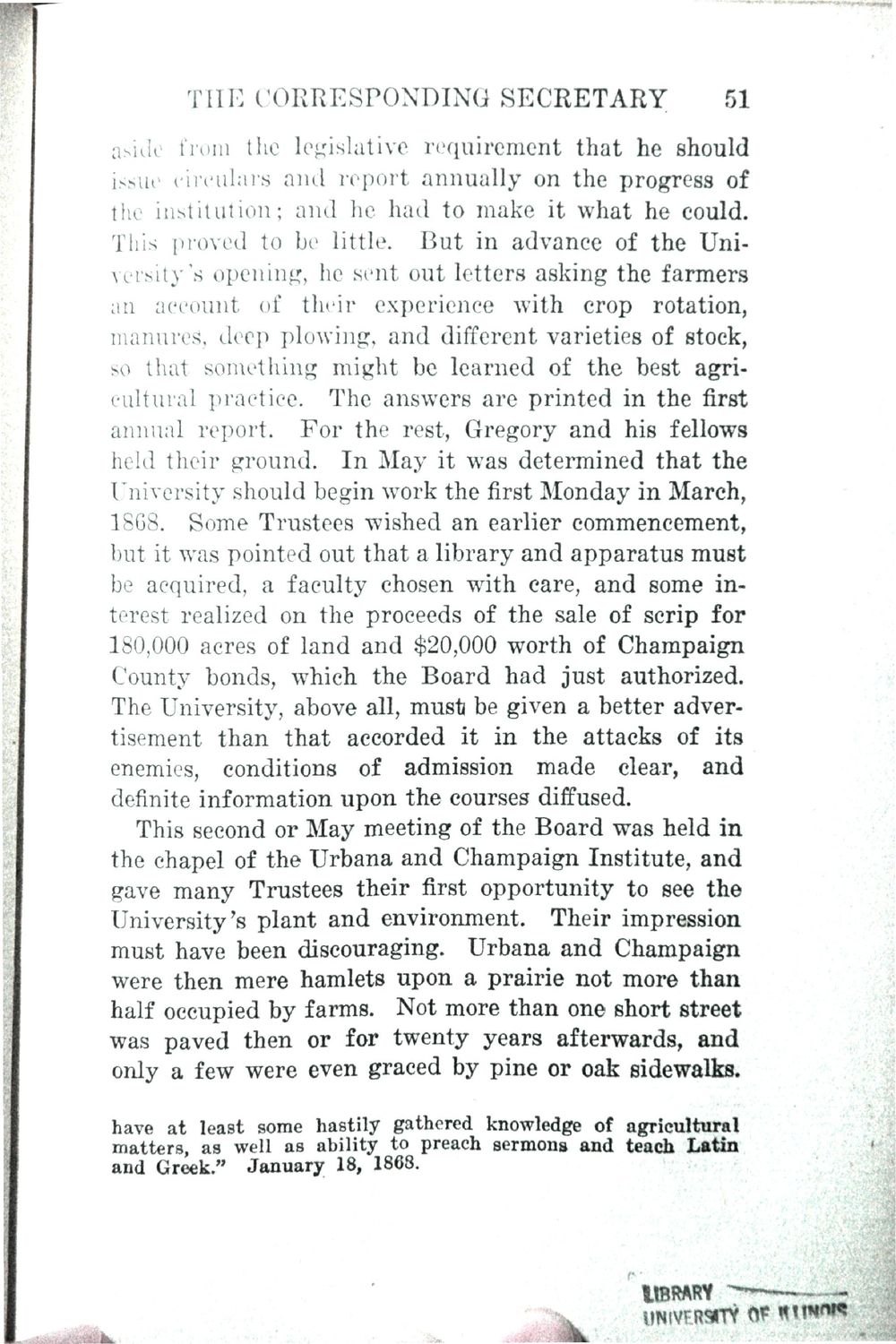| |
| |
Caption: Book - History of the University (Nevins)
This is a reduced-resolution page image for fast online browsing.

EXTRACTED TEXT FROM PAGE:
THE CORRESPONDING SECRETARY 51 aside from the legislative requirement that he should issue circulars and report annually on the progress of the institution; and he had to make it what he could. This proved to be little. But in advance of the University's opening, he sent out letters asking the farmers an account of their experience with crop rotation, manures, deep plowing, and different varieties of stock, so that something might be learned of the best agricultural practice. The answers are printed in the first annual report. For the rest, Gregory and his fellows held their ground. In May it was determined that the University should begin work the first Monday in March, 1868. Some Trustees wished an earlier commencement, but it was pointed out that a library and apparatus must be acquired, a faculty chosen with care, and some interest realized on the proceeds of the sale of scrip for 180,000 acres of land and $20,000 worth of Champaign County bonds, which the Board had just authorized. The University, above all, musti be given a better advertisement than that accorded it in the attacks of its enemies, conditions of admission made clear, and definite information upon the courses diffused. This second or May meeting of the Board was held in the chapel of the Urbana and Champaign Institute, and gave many Trustees their first opportunity to see the University's plant and environment. Their impression must have been discouraging. Urbana and Champaign were then mere hamlets upon a prairie not more than half occupied by farms. Not more than one short street was paved then or for twenty years afterwards, and only a few were even graced by pine or oak sidewalks. have at least some hastily gathered knowledge of agricultural matters, as well as ability to preach sermons and teach Latin and Greek." January 18, 1868. UBRAW HS SKoiramiliffliSilflSH Hi •
| |